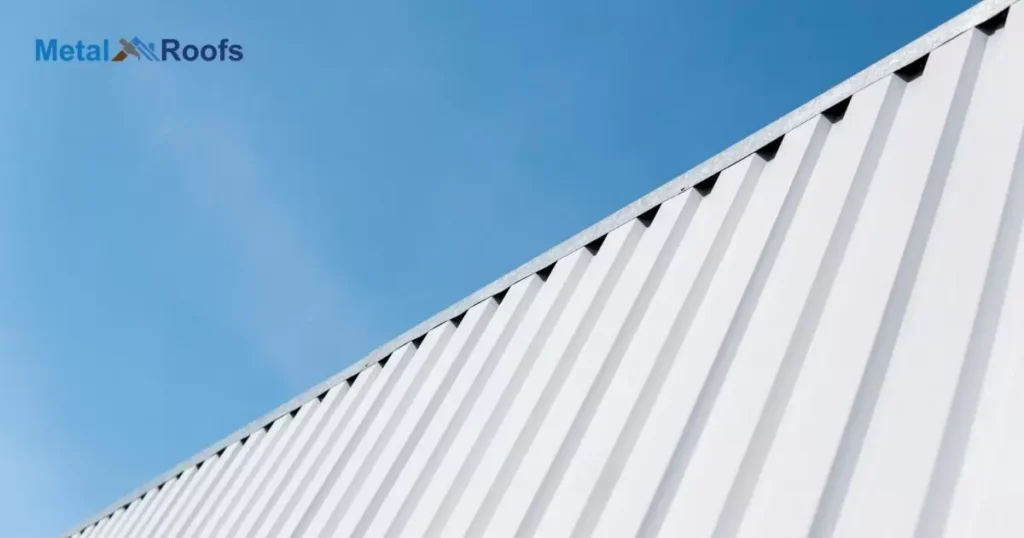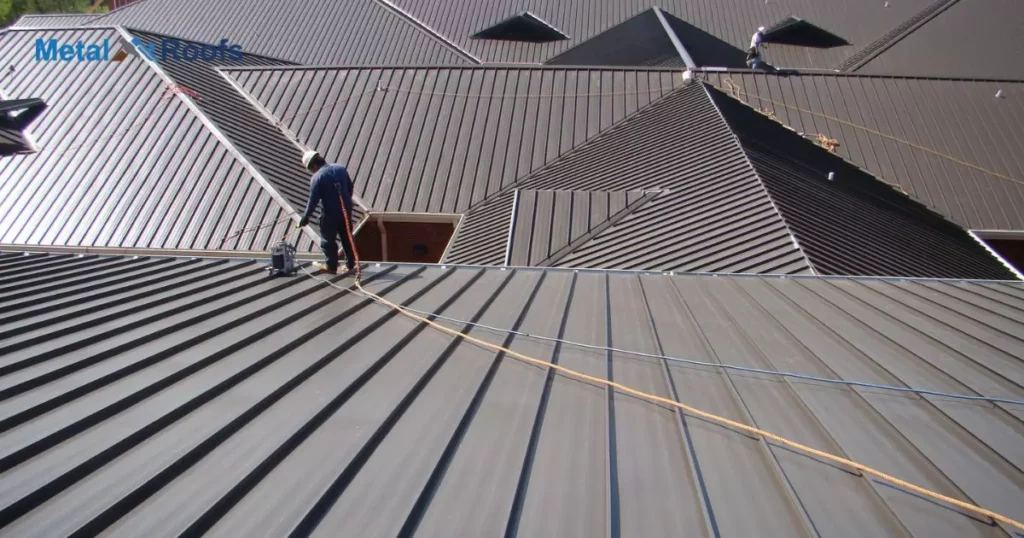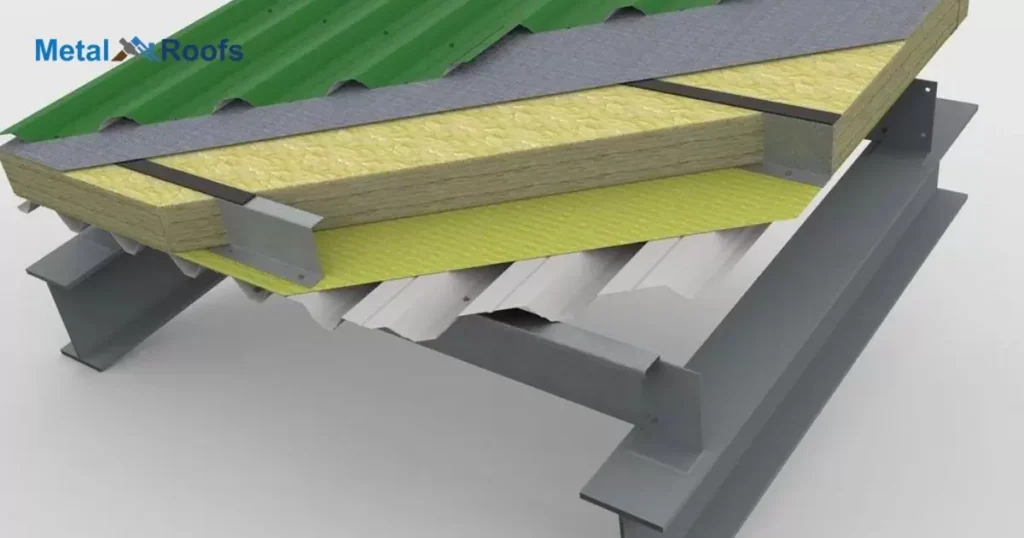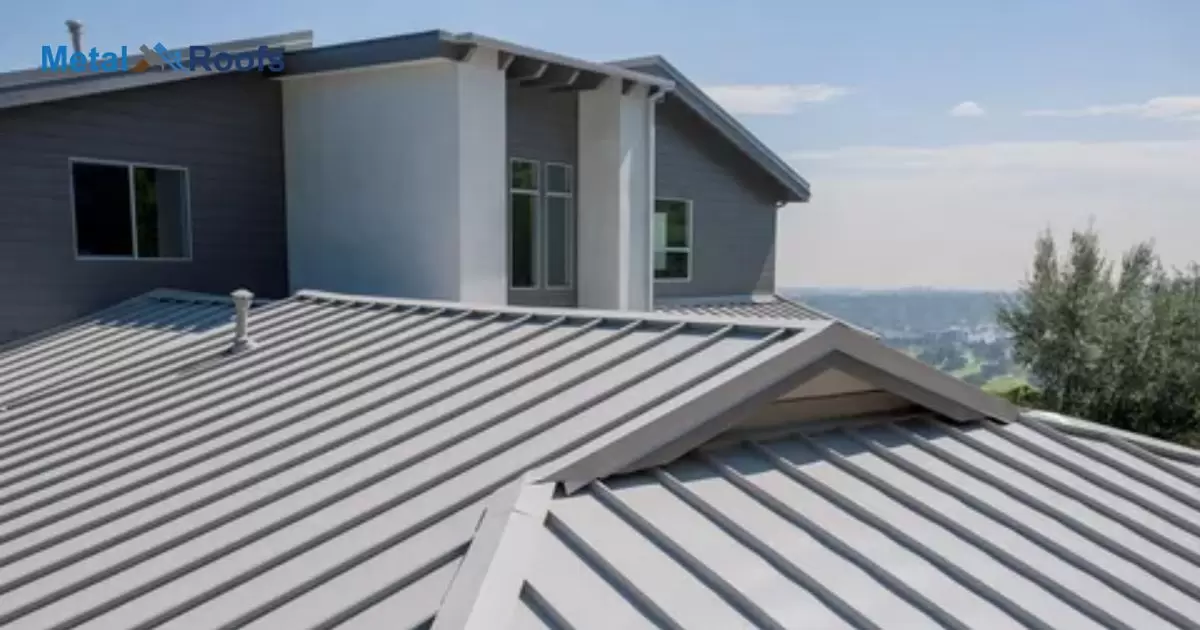The metal trim around the edge of a roof is called flashing. Flashing seals joints and prevents water leaks where the roof meets walls, chimneys, and other surfaces. It is typically made of galvanized steel, aluminum, copper, or other durable, corrosion-resistant metals.
Noticing the What Is The Metal Trim Around A Roof Called? It’s an important yet often overlooked roof feature. This metal edging is called flashing. It seals joints where roof surfaces meet, preventing leaks. Multiple flashing types exist for different roof shapes and details.
Now that you understand flashing and its importance for proper roof installation, it’s time to inspect your roof. Check for cracked, loose, or missing flashing that could allow leaks, especially around chimneys, vents, and screws on a metal roof. Consider hiring a professional roofer for an inspection and repairs if you notice any issues.
Key Takeaway
- Metal roofing trim is the protective edge that enhances aesthetics and prevents water infiltration.
- The superhero, flashing, seals joints, fortifying your roof against the elements.
- Together, these components ensure a secure and resilient shelter for your home.
What Are The Functions Of Metal Roofing Trim?
Metal roofing trim serves two primary functions, protection and aesthetics. Firstly, it acts as a shield against the elements, preventing water, snow, and debris from infiltrating the roofing system. This safeguarding feature helps to extend the lifespan of the roof and safeguards the underlying structure from potential damage.
Secondly, metal roofing trim contributes to the overall visual appeal of the structure by providing a neat and finished look. It conceals the edges and joints of the roofing panels, giving the roof a polished appearance. In essence, the functions of metal roofing trim go beyond mere aesthetics, ensuring both durability and a pleasing exterior.
Importance Of Metal Roofing Trim In Roofing Systems
Metal roofing trim plays a crucial role in roofing systems. It serves as a protective edge, preventing water from seeping into vulnerable areas. Without proper trim, your roof is susceptible to leaks and damage.
Additionally, metal roofing trim enhances the aesthetic appeal of your roof. It provides a clean and polished finish, contributing to the overall durability and visual charm of the roofing system. In essence, the importance of metal roofing trim lies in its dual function of safeguarding against water infiltration and elevating the appearance of your roof.
Types Of Metal Roofing Trim

Metal roofing trim serves a crucial role in enhancing the durability and aesthetics of your roof. There are various types to consider:
Drip Edge Trim: Prevents water from seeping under the roofing material, safeguarding your roof from potential damage.
Ridge Cap Trim: Covers the peak of the roof, providing an extra layer of protection against weather elements.
Gable Trim: Shields the edges of the roof and adds a finished look, contributing to the overall curb appeal.
Eave Trim: Secures the edges of the roof and directs water away, preventing potential water damage over time.
Understanding these metal roofing trim types ensures a well-protected and visually appealing roofing system for your home.
Common Terms Related To Metal Roofing Trim
Metal roofing trim includes vital components for a sturdy installation. Flashing, a thin metal sheet, seals joints and prevents water leaks. Drip edge, another essential trim, directs rainwater away from the roof edge, safeguarding against potential damage.
Ridge caps, positioned at the peak, shield the roof’s highest point from weathering. Eave trim, located along the roof’s lower edge, completes the setup, enhancing aesthetics and reinforcing protection. Understanding these terms ensures a robust grasp of metal roofing essentials, promoting durability and longevity.
How To Install Metal Roofing Trim?
| Steps | Description |
| Measure and Plan | Accurately measure roof edges and plan trim placement. |
| Cut Trim Pieces | Using appropriate tools, cut metal trim to specifications. |
| Install Eave Trim | Begin with eave trim, securing it along the roof edge. |
| Secure Side Trim | Attach side trim, ensuring a snug fit and proper alignment. |
To install metal roofing trim, start by measuring and cutting the trim pieces to fit your roof’s edges. Use a saw or snips for a clean cut. Next, attach the trim to the roof with screws, making sure it’s securely fastened. Use a drill to make holes for the screws, placing them about every 12 inches.
Overlap the trim pieces at corners and joints, ensuring a watertight seal. Finally, paint or seal the trim for added durability against the elements. That’s it a simple and effective way to install metal roofing trim and protect your roof edges.
Metal Roofing Trim And Its Impact On Roof Aesthetics
Metal roofing trim plays a crucial role in enhancing the overall appearance of your roof. These trims, available in various styles and colors, contribute significantly to the aesthetics of your home.
The clean lines and sleek finish of metal trims create a modern and polished look that can elevate the curb appeal of any property. Choosing the right metal roofing trim can also help in achieving a harmonious design for your roof.
Coordinating the trim color with the roofing material creates a cohesive and visually appealing effect. Whether it’s a contrasting trim for a bold statement or a matching trim for a seamless look, the choice of metal roofing trim directly impacts the visual appeal of your roof.
Metal Roofing Trim Maintenance
Metal roofing trim maintenance is crucial for long-lasting protection. Regularly inspect your trim for rust or corrosion. Use a wire brush to remove any rust, then apply a rust-resistant primer.
Clean the trim with a mild detergent and water mixture. Avoid abrasive cleaners to prevent scratching. A quick, routine check ensures your metal roofing trim stays in top-notch condition, shielding your roof effectively.
Metal Roofing Trim Vs. Other Roofing Materials

Metal roofing trim outshines other materials. It’s durable, low-maintenance, and withstands harsh weather. Unlike asphalt or wood, it resists rot and doesn’t crack.
Moreover, metal trim is cost-effective. Its longevity trumps the constant repairs of alternatives. In conclusion, for a sturdy and budget-friendly roofing solution, metal trim is the clear winner.
Metal Roofing Trim: Cost And Considerations
Metal roofing trim plays a crucial role in the overall cost of your roofing project. Choosing the right trim is essential to ensure durability and a polished finish. Investing in quality trim might seem pricier upfront, but it pays off by preventing future issues and reducing maintenance expenses.
Considerations include the type of metal used for the trim, its thickness, and the complexity of the installation. Thicker and higher-grade metal trims tend to be more expensive, but they offer better resistance to weathering.
Additionally, labor costs can vary based on the complexity of the trim design. Balancing these factors helps you make a cost-effective decision for a durable and aesthetically pleasing metal roofing trim.
Metal Roof Fasteners And Their Relationship To Metal Roofing Trim
Metal roof fasteners play a crucial role in securing metal roofing trim. These fasteners, typically screws or nails, anchor the metal panels to the structure. They ensure a tight grip, preventing leaks and enhancing the overall durability of the metal roofing system.
Metal roofing trim, on the other hand, serves as a protective edge and finishing touch. It covers joints and edges, safeguarding against weather elements. The relationship between metal roof fasteners and trim is symbiotic; the fasteners secure the panels, while the trim adds the final layer of defense, creating a robust and resilient metal roofing structure.
Glossary Of Metal Panel Trim Names & Types
Metal panel trim plays a vital role in construction. Corner trim, used to cover edges, ensures a neat finish. J-trim conceals panel edges, adding a polished look.
Z-flashing directs water away, guarding against leaks. Hemming strengthens panel edges, preventing sharpness. Reveal trim creates shadow lines, enhancing aesthetics. Understanding these metal panel trim types is key to quality construction.
Differences Between Metal Roofing Trim And Other Types Of Trim
Metal roofing trim stands out for its durability and longevity. Unlike other trims, it resists rust and corrosion, making it a sturdy choice for diverse climates. Metal trim requires minimal maintenance, saving you time and effort over the long haul.
In contrast, traditional trims may succumb to weathering, demanding frequent replacements. Metal roofing trim, with its resilience and low upkeep, emerges as a cost-effective and reliable solution, setting it apart from other trim options.
Metal Roofing Trim And Flashing

Metal roofing trim and flashing play crucial roles in protecting your roof. Trim, often made of steel or aluminum, gives the roof edges a clean finish and prevents water infiltration. It’s like the neat border on a picture but for your roof.
Flashing, on the other hand, is like the superhero cape on your roof. Usually made from galvanized steel or aluminum, it seals joints and edges, keeping water out. Without proper trim and flashing, your roof might be like a leaky boat in a storm. So, make sure these unsung heroes are in place to keep your home dry and cozy.
Frequently Asked Questions
What is the trim on the edge of a roof called?
The trim on the edge of a roof is simply called “roof trim.”
What is the trim called on a metal roof?
The trim on a metal roof is simply called “metal roofing trim.” It provides a clean finish and helps prevent water infiltration along the roof edges.
What do you call the metal strip on a roof?
It’s called metal roofing trim.
Conclusion
In conclusion, what is the metal trim around a roof is essential. This metal roofing trim acts like a protective frame, ensuring the roof’s durability. It’s the finishing touch that not only enhances aesthetics but also keeps your home safe.
Moreover, don’t forget the superhero, flashing. This vital element seals the roof joints, safeguarding against water infiltration. Together, these unsung heroes’ metal roofing trim and flashing fortify your roof, making it resilient against the elements. So, embrace these simple yet crucial components for a secure and reliable shelter.











